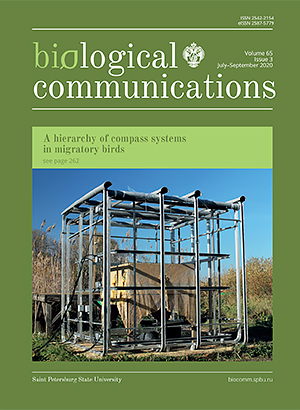Lateralization of vigilance in geese: influence of flock size and distance to the source of disturbance
DOI:
https://doi.org/10.21638/spbu03.2020.305Abstract
Left-eye preference, implicating right hemisphere advantage, is typical for vigilant behaviour of many vertebrates. Nevertheless, lateralization of vigilance may be manifested in other ways, such as different reactions to the danger viewed with the right and left eye. Here, we studied one-side biases in the orientation of white-fronted geese Anser albifrons feeding in flocks at different distances to the source of anthropogenic disturbance (a road with traffic) and in flocks of different sizes. The birds which used the left eye to monitor the road were at shorter distances to the road than the birds which used the right eye. The tendency to monitor the road with the right eye decreased with increasing flock size. Trade-offs between feeding, social and vigilant behaviour could explain these tendencies.
Keywords:
vigilant behaviour, antipredator behaviour, social behavior, sensory lateralization, visual lateralization, white-fronted goose, disturbance, hunting, flight initiation distance, lateral bias
Downloads
References
Downloads
Additional Files
Published
How to Cite
License
Articles of Biological Communications are open access distributed under the terms of the License Agreement with Saint Petersburg State University, which permits to the authors unrestricted distribution and self-archiving free of charge.





